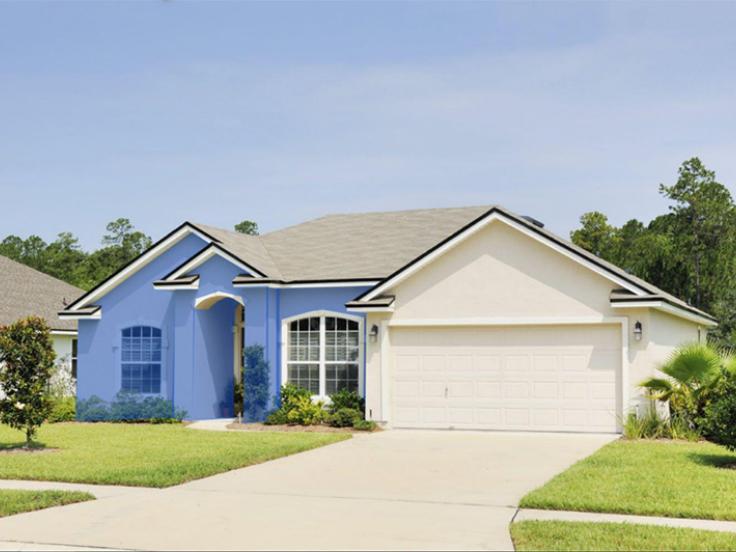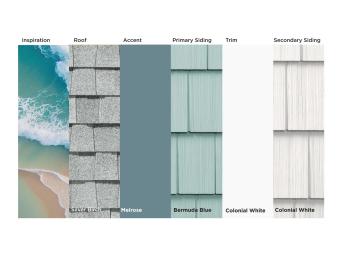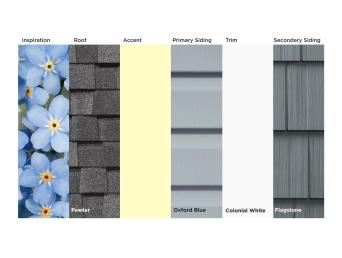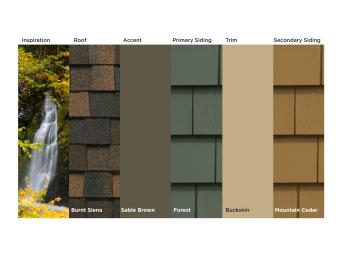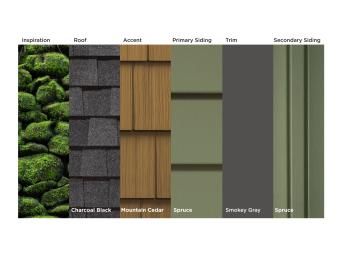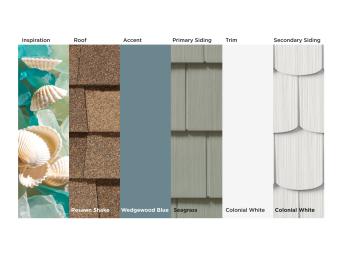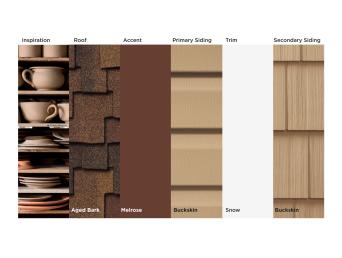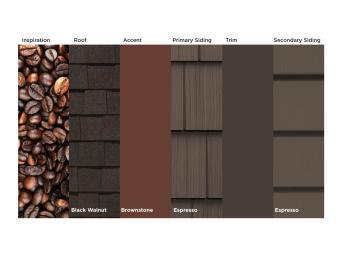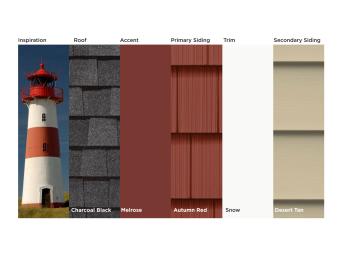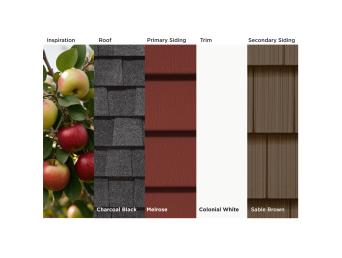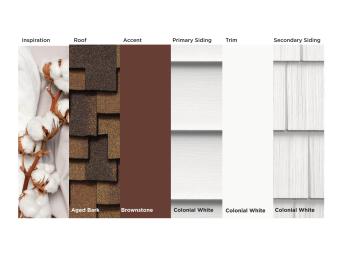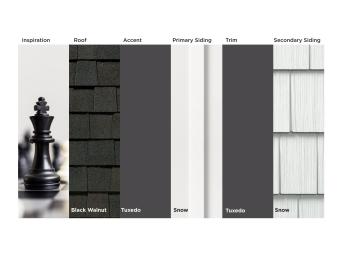What is a Color Palette?
A color palette is the combination of colors used in a specific space. It refers to the more specific color choices, as opposed the the style of color choice (monochromatic, analogues, or complementary), which would be considered a color scheme. Your chosen color palette creates the visual foundation of your home. As we mentioned earlier with the 60-30-10 Rule, a palette is normally comprised of three (or four colors) to create contrast or blend an exteriors' features.
How to Create Your Home Color Palette
From cool or warm hues, as well as blends and stains, we want to help you choose a color palette that best reflects what you want for your exterior personality. Once you dive in with your siding choice, the next step is selecting accent and trim colors. For these elements you can stay within your color palette or combine with another color palette to create your vision. The palette takes inspiration from your chosen color scheme. After deciding between a monochromatic, analogues, or complementary scheme, take inspiration from CertainTeed's color choices and our curated design palettes below. Combine two or three shades to complement your prominent siding choice. Take note of the colors' undertones, shades, and the 60-30-10 Rile to create a harmonious balance for your home's exterior.

Our Favorite Color Palettes
Calming Blue
A calming blue home exterior evokes a sense of tranquility, making a space feel lighter, larger and creating a feeling of open space. Blue color schemes tend to blend well with a variety of siding and roofing choices, wood and stone siding, in particular. It works especially well in northern and coastal areas where natural light changes more dramatically with the seasons.
Fresh Green
The fresh green home exterior is a classic choice. Brighter greens create a more open, airy space, while softer, muted tones are calming, peaceful and stable, blending more seamlessly with the landscape.
Earthy Brown
An earthy brown exterior creates the sense of a natural, grounded home. Friendly and inviting, this neutral color choice has made itself a steady favorite in recent years. A brown home exterior also tends to fare better in rough weather conditions, with less-noticeable wear over time.
Bold Reds
A statement red color choice adds visual distinction to the home’s exterior. It is a warm, dramatic color, which can create an earthier visual and make the home appear smaller depending on the shade. Using red as an accent color is a popular choice, as it can highlight the interesting architectural features of the home.
Cool Grays
Cool grays, like its undertones of blues and greens, create a calming, airy exterior. A brighter shade of gray will make the home appear larger, and this neutral color is a prime choice to highlight various aspects of the exterior. Finding the contrast between the exterior accent and the gray’s undertones is the best way to make your home stand out.
Warm Grays
A warm gray home exterior is a classic, neutral choice. Warmer grays have undertones of yellows, reds, and browns, helping the home to blend well with various accent and roofing choices and with the landscape. Grays are calming and practical for a home's exterior.
Whites
White homes are on trend for all the right reasons. Lighter colors, such as white, will reflect the sunlight, keeping the home cooler in the summer months and preventing the siding from fading. White, like any light color, also tends to make a home seem larger.
Finishing Touches
To round out your exterior color palette, trim is the finishing touch, the final 10% of the home’s exterior. Traditional white trim accentuates windows cleanly with any color siding, and dark trim colors work well to frame a home and outline architectural details. CertainTeed Restoration Millwork® cellular PVC comes in smooth or TrueTexture™ finish and can be handcrafted to create an unlimited range of designs and color choices to find the best match. When using a darker trim, choosing a roof color that matches or is a shade lighter than the trim produces an anchored, coordinated appeal. With a high contrast trim, it’s important to balance its location on the home; it should not dominate any one area. And for a more subtle combination, you can choose trim and siding closer in hue and intensity.
Now that you are caught up with the details and complexities of color, it’s your chance to make the vision come to life. When curating your ideal exterior color palette, take note of the 60-30-10 Rule when balancing color choices, use our color wheel to pinpoint undertones, and choose a harmony that works best with the aesthetic of your home. CertainTeed is at your disposal with design tips and tricks to take inspiration to the next level. So, dive right in, get creative, and – most importantly – have fun!
Color Your Home
Upload a photo of your home to "try on" different colors of siding, roofing, and trim using our ColorView home visualizer.
